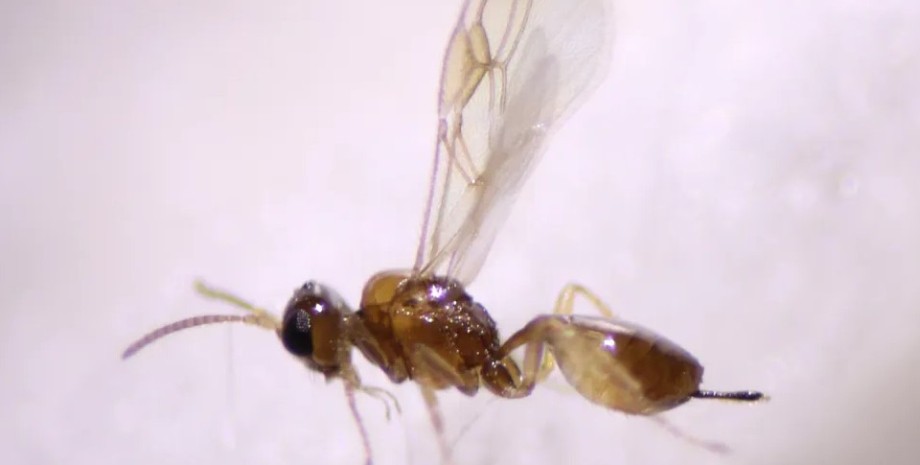
 By Natali Moss
By Natali Moss
It should be noted that other predatory types of wasps are known to science, but they tend to attack flies in earlier stages of life - larvae or pupae. It should be noted that the wasps are always parasitoids, not parasites, because in the end they always kill their masters, while parasites usually do not do it. In focus. Technology has appeared its Telegram channel.
Subscribe not to miss the latest and most intrusive news from the world of science! According to the leading author of the study, the biologist from the University of Mississippi Logan Mura, they came across the OSU by accident, collecting the usual fat fly Drosophila Affinis on their back yards in Mississippi. Researchers have found that S. Perlmani's female uses her needle ovum, something like a sting in the wasps, to pierce and put an egg into the abdomen of the fruit fly.
Then a tiny larva of the wasp, which grows inside the fly for about 17 days, and then leaves the body of the owner, piercing and killing it. According to Mura, it seems even more terrifying that the larva actually comes out from the sides of the fly. But the most horrifying thing seems that the fly usually stays alive for several hours after.
During the study, scientists intended to check the fruit flies for the presence of parasitic worms known as nematodes, but came across something more interesting. Before them was the larva of the wasp with a sharp tail inside the abdomen of one of the flies. Initially, scientists accepted it as an accident, but then found more OS larvae and eventually confirmed their discovery, growing in the laboratory and studying the DNA of a new species.
The team watched as in the laboratory mature larvae left their owners, remaining in place for several hours until the flies were alive and then buried in any substrate provided by scientists. Once under cover, they were in the cocoon stage for about 23 days before growing in adults. Interestingly, scientists have studied fruit flies for centuries, but have not noticed this kind of OS that use this body before.
It should be noted that fruit flies are ideally suited for scientific research, as about 75% of genes responsible for human diseases are divided with people. At the same time, the detection of wasp was a surprise for researchers, as the fruit flies are extremely common and well studied. As a result, scientists were extremely surprised, finding a completely new kind of OS in their bodies.










All rights reserved IN-Ukraine.info - 2022